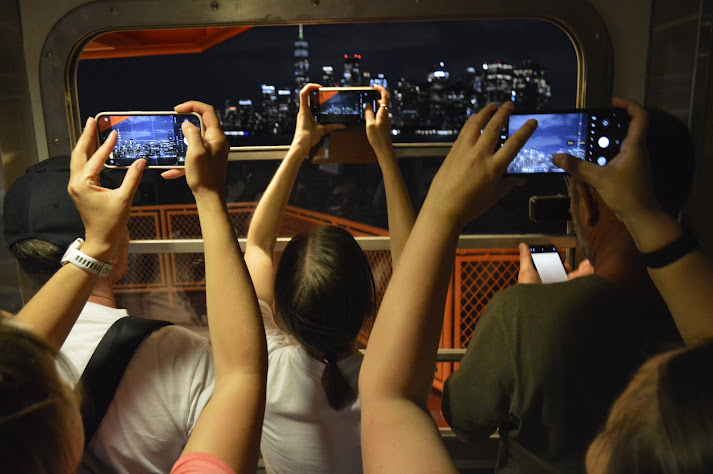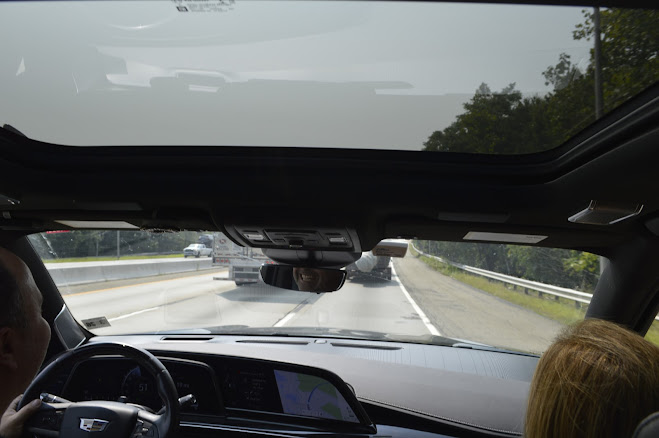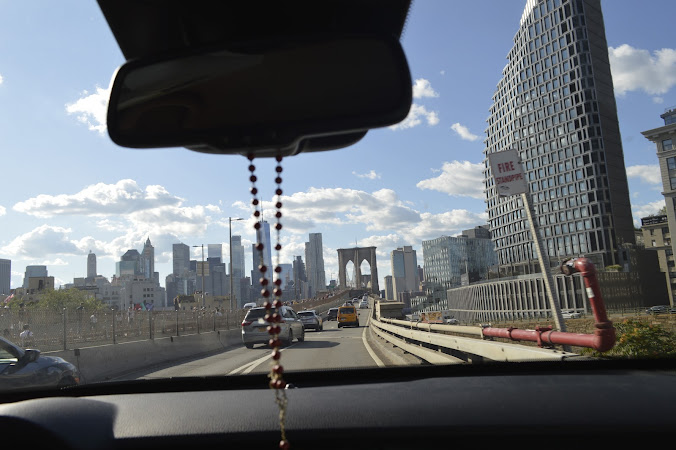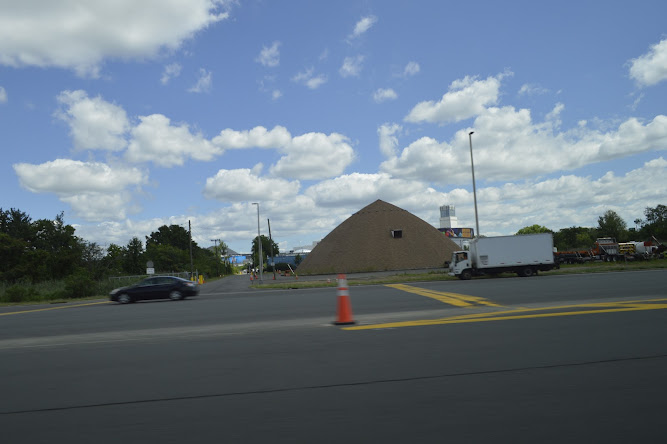di Salvatore D'Agostino
Facebook Header
16 agosto 2024
|088| a mano libera verso aeroporto di Milano Linate #amanolibera 16*08*2024
15 agosto 2024
|087| a mano libera verso aeroporto di Londra Heathrow #amanolibera 15*08*2024
di Salvatore D'Agostino
|086| a mano libera verso l’aeroporto internazionale Newark-Liberty #amanolibera 15*08*2024
di Salvatore D'Agostino
|085| a mano libera verso Preakness Shopping Center #amanolibera 14*08*2024
di Salvatore D'Agostino
|084| a mano libera verso Wanaque #amanolibera 14*08*2024
di Salvatore D'Agostino
14 agosto 2024
|083| a mano libera in giro per Manhattan #amanolibera 13*08*2024
di Salvatore D'Agostino
|082| a mano libera verso Manhattan #amanolibera 13*08*2024
di Salvatore D'Agostino
|081| a mano libera verso Manhattan #amanolibera 13*08*2024
di Salvatore D'Agostino
|080| a mano libera verso Manhattan #amanolibera 13*08*2024
di Salvatore D'Agostino
|079| a mano libera verso Manhattan #amanolibera 13*08*2024
di Salvatore D'Agostino
|078| a mano libera verso Manhattan #amanolibera 13*08*2024
di Salvatore D'Agostino
|077| a mano libera nei dintorni di Brooklyn #amanolibera 13*08*2024
di Salvatore D'Agostino
|076| a mano libera nei dintorni di Brooklyn #amanolibera 13*08*2024
di Salvatore D'Agostino
|075| a mano libera nei dintorni di Brooklyn #amanolibera 13*08*2024
di Salvatore D'Agostino
|074| a mano libera nei dintorni di Brooklyn #amanolibera 13*08*2024
di Salvatore D'Agostino
|073| a mano libera nei dintorni di Brooklyn #amanolibera 13*08*2024
di Salvatore D'Agostino
 Ripeto l’esperienza dopo più di trentacinque anni: farmi condurre da un trenino di legno su una montagna russa, un’opera in legno di quasi cento anni fa, costruita da abili carpentieri. Il trenino, scomodo e spigoloso, viaggia a circa 100 km/h, e ogni curva si sentono i cigolii del legno. Questa volta, ho vissuto l’avventura con mio figlio, che ormai ha quasi trent'anni, cercando di ritrovare quel divertimento infantile. Penso a tutti quelli, bambini e adulti, che hanno provato il famoso "Cyclone", con la sua corsa vertiginosa tra l’oceano Atlantico e i margini di Brooklyn.
Ripeto l’esperienza dopo più di trentacinque anni: farmi condurre da un trenino di legno su una montagna russa, un’opera in legno di quasi cento anni fa, costruita da abili carpentieri. Il trenino, scomodo e spigoloso, viaggia a circa 100 km/h, e ogni curva si sentono i cigolii del legno. Questa volta, ho vissuto l’avventura con mio figlio, che ormai ha quasi trent'anni, cercando di ritrovare quel divertimento infantile. Penso a tutti quelli, bambini e adulti, che hanno provato il famoso "Cyclone", con la sua corsa vertiginosa tra l’oceano Atlantico e i margini di Brooklyn.|072| a mano libera nei dintorni di Brooklyn #amanolibera 13*08*2024
di Salvatore D'Agostino
|071| a mano libera nei dintorni di Brooklyn #amanolibera 13*08*2024
di Salvatore D'Agostino
|070| a mano libera verso Coney Island #amanolibera 13*08*2024
di Salvatore D'Agostino
|069| a mano libera verso Coney Island #amanolibera 13*08*2024
di Salvatore D'Agostino
13 agosto 2024
|068| a mano libera verso Pompton Queen Diner & Restaurant #amanolibera 12*08*2024
di Salvatore D'Agostino
"Dove sono Elmer, Herman, Bert, Tom e Charley, il debole di volontà, il forte di braccia, il buffone, il beone, il rissoso? Tutti, tutti dormono" … qui accanto a noi, senza alcuna barriera, poiché la città dei morti convive con la città dei vivi, sullo stesso piano.“Where are Elmer, Herman, Bert, Tom, and Charley, the weak-willed, the strong-armed, the joker, the drunkard, the brawler? All, all are sleeping” ….here beside us, without any barrier, as the city of the dead coexists with the city of the living, on the same level.
12 agosto 2024
|067| a mano libera verso St Joseph’s Wayne Hospital #amanolibera 11*08*2024
di Salvatore D'Agostino
|066| a mano libera in giro per New York #amanolibera 11*08*2024
di Salvatore D'Agostino
11 agosto 2024
|065| a mano libera nell'ascensore della High Line #amanolibera 10*08*2024
di Salvatore D'Agostino
|064| a mano libera intorno al 102°piano dell’Empire State Building #amanolibera 10*08*2024
di Salvatore D'Agostino
|063| a mano libera intorno al 102° piano dell’Empire State Building #amanolibera 10*08*2024
di Salvatore D'Agostino
10 agosto 2024
|062| a mano libera in giro per New York #amanolibera 09*08*2024
di Salvatore D'Agostino
 La metropolitana di New York, a mio avviso, ha un grande vantaggio: potrebbe essere restaurata mantenendo il suo aspetto attuale senza spendere nemmeno un dollaro. I pilastri in acciaio un po’ usurati, le panche in legno dipinte di nero e sbiadite, i cavi dei servizi sospesi in aria e ammassati a vista, e soprattutto le piastrelle bianche sporche, sono tutti elementi essenziali che potrebbero essere valorizzati in un restauro in stile industriale, lasciando tutti soddisfatti. Ci sono tanti architetti che progettano con l’obiettivo di ottenere proprio questo risultato, un po’ come i jeans strappati prodotti in serie; qui, invece, è già tutto realizzato, e mi sembra molto più autentico di un falso stile industriale progettato ex novo.
La metropolitana di New York, a mio avviso, ha un grande vantaggio: potrebbe essere restaurata mantenendo il suo aspetto attuale senza spendere nemmeno un dollaro. I pilastri in acciaio un po’ usurati, le panche in legno dipinte di nero e sbiadite, i cavi dei servizi sospesi in aria e ammassati a vista, e soprattutto le piastrelle bianche sporche, sono tutti elementi essenziali che potrebbero essere valorizzati in un restauro in stile industriale, lasciando tutti soddisfatti. Ci sono tanti architetti che progettano con l’obiettivo di ottenere proprio questo risultato, un po’ come i jeans strappati prodotti in serie; qui, invece, è già tutto realizzato, e mi sembra molto più autentico di un falso stile industriale progettato ex novo.|061| a mano libera verso Staten Island Ferry Whitehall Terminal Greenmarket New York #amanolibera 09*08*2024
di Salvatore D'Agostino

|060| a mano libera verso St George Ferry Terminal New Jersey #amanolibera 09*08*2024
di Salvatore D'Agostino
|059| a mano libera verso St George Ferry Terminal New Jersey #amanolibera 09*08*2024
di Salvatore D'Agostino
|058| a mano libera in giro per New York #amanolibera 09*08*2024
di Salvatore D'Agostino
9 agosto 2024
|057| a mano libera in giro per New York #amanolibera 08*08*2024
di Salvatore D'Agostino
|056| a mano libera in giro per New York #amanolibera 08*08*2024
di Salvatore D'Agostino
|055| a mano libera in giro per New York #amanolibera 08*08*2024
di Salvatore D'Agostino
|054| a mano libera in giro per New York #amanolibera 08*08*2024
di Salvatore D'Agostino
|053| a mano libera in giro per New York #amanolibera 08*08*2024
di Salvatore D'Agostino
|051| a mano libera verso New York #amanolibera 08*08*2024
di Salvatore D'Agostino
|050| a mano libera verso New York #amanolibera 08*08*2024
di Salvatore D'Agostino
|049| a mano libera verso Ridgefield #amanolibera 08*08*2024
di Salvatore D'Agostino

8 agosto 2024
|048| a mano libera verso Ringhwood #amanolibera 07*08*2024
di Salvatore D'Agostino

E quando le autostrade raggiungono nodi urbani con alta intensità di traffico, alle normali 3 o 4 corsie si aggiungono altre due corsie chiamate "express lanes" – corsie espresse dove puoi evitare gli ingorghi che si creano, basta solo pagare di più.
And when highways reach urban nodes with high traffic intensity, the usual 3 or 4 lanes are supplemented by two additional lanes called "express lanes"—lanes where you can avoid the traffic jams, as long as you’re willing to pay more.
|047| a mano libera verso Ringhwood #amanolibera 07*08*2024
di Salvatore D'Agostino
|046| a mano libera verso Ringhwood #amanolibera 07*08*2024
di Salvatore D'Agostino






































